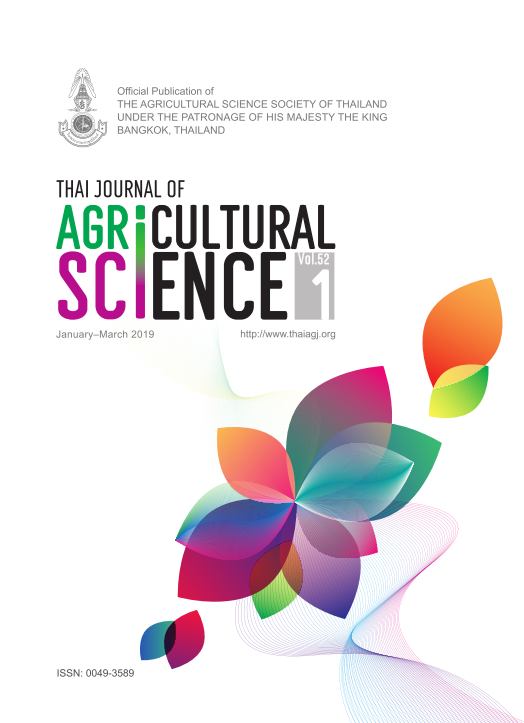Flowering and Fruit Set of Rubber (Hevea brasiliensis) during Summer Rainfall in Songkhla Province, Southern Thailand
Main Article Content
Abstract
The incidence of summer rainfall and lower seed production by rubber trees in Songkhla province, southern Thailand are tending to arise more frequently and the impact of summer rainfall on the flowering and fruit set of rubber trees was therefore investigated. The incidence of summer rainfall during the months of January-April between 1969 and 2012 was plotted and the flowering phenology of early–introduced variety rubber trees aged more than 40 years old in the Hatyai Campus, Prince of Songkhla University, Songkhla province, Thailand was recorded. The results showed that anomalous summer rainfall had become a feature of the local climate with the most obvious increase, tending to occur in March. The 40 years average rainfall, the 8 years average and the total rainfall during March in the years 2011 and 2012 were 58.0 mm, 125.6 mm, 287.7 mm and 176.8 mm respectively. The 8 years average rainfall in March had increased by 116.55%, over the 40 years average rainfall with the 2011 and 2012 March rainfall increased by 396.03% and 204.83% respectively. The incidence of rainfall in March in 2011 and 2012 was 17 and 11 days, respectively. Summer rain conditions during the flowering period of rubber induced an outbreak of Oidium secondary leaf fall disease which destroy leaves, inflorescences and the fruit of rubber. Approximately 50% of the flowering shoots developed to the fruit-setting stage. The average number of fruits per flowering shoot was 2.18, and they all dropped within three weeks, mostly during the first (58.11%) and second (39.19%) week after fruit-setting. The results obtained are beneficial to the development of techniques to improve rubber seed production in commercial rubber plantations.


